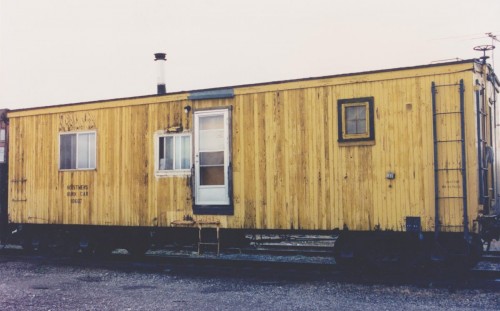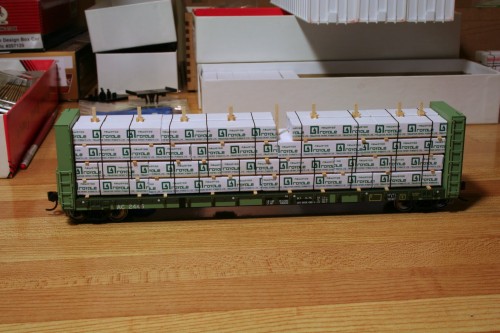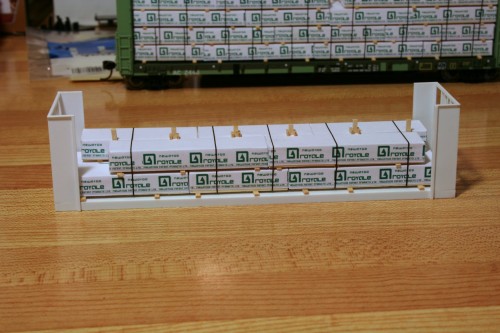
One interesting source of current bridge traffic over the former Algoma Central is copper concentrate heading over the Ontario Northland Railway to be smelted at the large facility at Rouyn-Noranda, QC. This traffic apparently comes from the Michigan “Upper Peninsula” from the concentrator at the Humboldt Mill which was recently rebuilt and started ore production in 2014 and travels across CN up to Hearst to interchange with the ONR. The three photos of MWCX cars in this post were photographed on July 16, 2015 in Cochrane, Ontario, but had just arrived from Hearst that day. Several more cars (possibly even the same ones actually) were seen from a distance in the northern section of Hawk Junction yard a few days earlier.
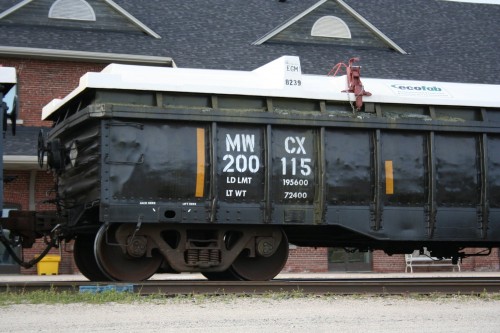
MWCX 200115 is an older car originally built by Greenville Steel Car for the Pittsburgh & Lake Erie Railroad, and has had a few interim owners since them, one notable operator of these former P&LE cars being the Chicago & Northwestern Railroad. Its acquisition by Midwest Railcar Leasing (MWCX) is pretty recent however.
This closeup shot shows a fair amount of load spillage around the top edges of the car; you can see the buildup of the greenish-coloured ore copper ore concentrate in the dust on the side of the car.
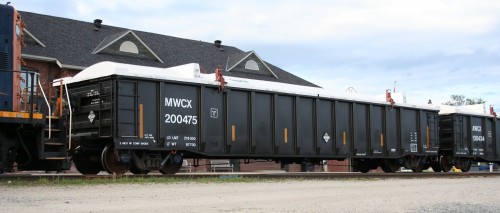
This car, MWCX 200475, is a good example of the modern gondola on today’s railways, having been built in early 2015. One other car in this set of five was also built in 2014, and the others were older, but clearly quite recently shopped and repainted in 2014-2015.
While this movement (and certainly in these particular cars) seems to be a fairly new one, copper mining in the upper Michigan area seems to have been a sort of on-again, off-again affair, and shipments of ores from the states to the Noranda smelter seem to have occurred at various times in the past, so I might be able to make some sort of justification for adding a bit of this sort of traffic onto my eventual layout. (In older, contemporary cars of course.) There also seems to be some westward (to or from) interchange of ore concentrates in CN cars at Oba, possibly from as far away as Trail, British Columbia.
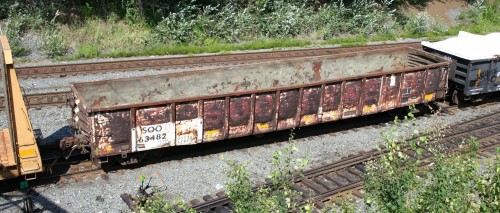
This SOO gondola photographed on July 17, 2013 in Sudbury (cars seen here would have been routed to/from points south via the ONR, OVR and CP) also shows telltale weathering of having been in concentrate service and provides a good look at the inside of the car. Note the caked-on greenish gray concentrate material on the interior sides. Today concentrates are shipped with fiberglass covers applied to the cars to prevent any loss in transit for both economic and, significantly, environmental concerns, but in the 1970s and early 1980s the stuff was actually shipped open. Bram Bailey’s book “Ontario Northland in Color” from Morning Sun Books has a couple of photos of trains with concentrate gondolas and a large greenish dust cloud trailing behind it…






